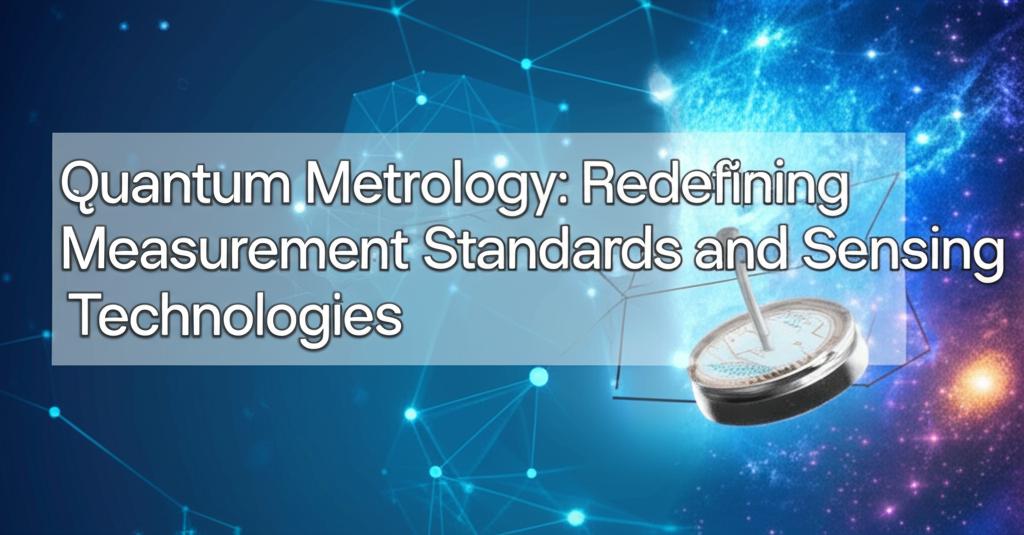Quantum metrology is rapidly transforming the landscape of measurement science and sensing technologies. By leveraging the unique principles of quantum mechanics, such as superposition and entanglement, researchers and engineers are pushing the boundaries of precision and sensitivity far beyond what classical methods can achieve. This ongoing "second quantum revolution" is not just an academic pursuit; it's paving the way for tangible advancements across a multitude of sectors.
The Foundation: Harnessing Quantum Phenomena for Unprecedented PrecisionAt its core, quantum metrology exploits the counterintuitive behaviors of particles at the quantum level.
- Superposition: This principle allows a quantum system, like an atom or a photon, to exist in multiple states simultaneously. In metrology, this means more information can be gathered from a single measurement, leading to enhanced precision.
- Entanglement: This phenomenon describes a situation where two or more quantum particles become linked in such a way that their fates are intertwined, regardless of the distance separating them. Entangled particles can be used in sensing to cancel out noise and achieve measurement sensitivities that were previously unimaginable.
- Squeezed Light: This is a special state of light where the quantum noise in one measurable property (like amplitude or phase) is reduced below the standard quantum limit, at the expense of increased noise in another complementary property. Squeezed light is proving crucial in boosting the sensitivity of gravitational wave detectors and other precision optical measurements.
One of the most significant impacts of quantum metrology is the redefinition of the International System of Units (SI). Since 2019, fundamental constants of nature, such as the Planck constant (h) and the elementary charge (e), now form the basis for defining units like the kilogram and the ampere. This shift ensures that measurement standards are universally accessible, intrinsically stable, and do not require calibration against physical artifacts. Quantum phenomena, such as the Josephson effect and the quantum Hall effect, are central to realizing these new definitions. Quantum-based atomic clocks, for instance, have revolutionized timekeeping, offering extraordinary precision that underpins global communication and navigation systems like GPS.
Transforming Sensing Technologies Across Diverse FieldsThe advancements in quantum metrology are directly fueling the development of novel sensing technologies with far-reaching applications:
- Healthcare and Medicine: Quantum sensors are poised to revolutionize medical diagnostics. Quantum-enhanced MRI could provide unprecedented detail at the molecular level. Wearable quantum biosensors could enable rapid, non-invasive disease detection by picking up minute magnetic signals from neurons or muscle activity. Researchers are even using quantum sensors to detect the nuclear quadrupolar resonance (NQR) signals from individual atoms, a feat with significant implications for drug development and understanding molecular interactions.
- Navigation and Geodesy: Ultra-precise atomic clocks and quantum gyroscopes offer unparalleled accuracy for navigation systems, both terrestrial and in space. Quantum gravimeters can map Earth's gravitational field with extreme precision, aiding in resource exploration, climate monitoring, and understanding geological phenomena like earthquakes.
- Environmental Monitoring: Quantum sensors can provide more accurate measurements of greenhouse gas emissions and other environmental pollutants, contributing to a better understanding and mitigation of climate change.
- Fundamental Science and Space Exploration: Quantum metrology is crucial for pushing the frontiers of fundamental physics. Highly sensitive detectors based on quantum principles are essential for detecting faint gravitational waves from cosmic events, opening new windows into the universe. Quantum sensors could also enable high-resolution mapping of distant planetary surfaces.
- Microelectronics and Materials Science: Quantum sensors can detect flaws and operational states in microelectronics with higher sensitivity, aiding in the design and quality control of next-generation integrated circuits. Quantum microscopy techniques allow for the imaging and measurement of matter at the nanoscale, driving innovation in materials science.
- Defense and Security: Quantum radar and LiDAR systems promise enhanced resolution and accuracy in object detection. Quantum communication, leveraging entanglement for quantum key distribution (QKD), is laying the groundwork for ultra-secure communication networks, safeguarding against emerging cybersecurity threats.
The field of quantum metrology is dynamic, with several key trends shaping its future:
- Miniaturization and Integration: Efforts are underway to develop smaller, more robust, and cost-effective quantum sensors, even chip-scale devices. This is crucial for broadening their applicability in real-world scenarios, including portable and space-based applications.
- Combining Quantum Metrology with Artificial Intelligence (AI): Machine learning algorithms are being used to design and optimize quantum sensing protocols, enhance signal processing, and even enable adaptive, intelligent quantum sensors that can learn and adjust in real-time.
- Expanding Quantum Sensing Modalities: Researchers are continuously exploring new quantum systems and phenomena for sensing applications. This includes advancements in using point defects in solid-state materials (like nitrogen-vacancy centers in diamonds) and atom interferometry.
- Addressing Decoherence: A major challenge in quantum technologies is decoherence, where the fragile quantum states are disturbed by environmental noise. Novel techniques are being developed to counteract decoherence and stabilize quantum systems for improved sensing performance.
- Growth and Investment: The global quantum technology market is experiencing significant growth, with substantial public and private investment fueling advancements in quantum computing, sensing, and communication. This investment is accelerating the transition of quantum technologies from experimental demonstrations to commercial products.
As we move further into 2025 and beyond, quantum metrology is set to continue its trajectory of redefining measurement standards and enabling sensing capabilities that were once the realm of science fiction. The ability to measure the world with ever-increasing precision will unlock new scientific discoveries, drive technological innovation, and provide solutions to some of society's most pressing challenges.

